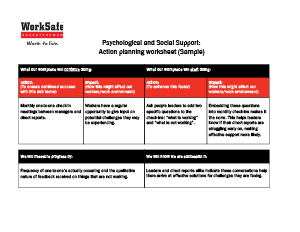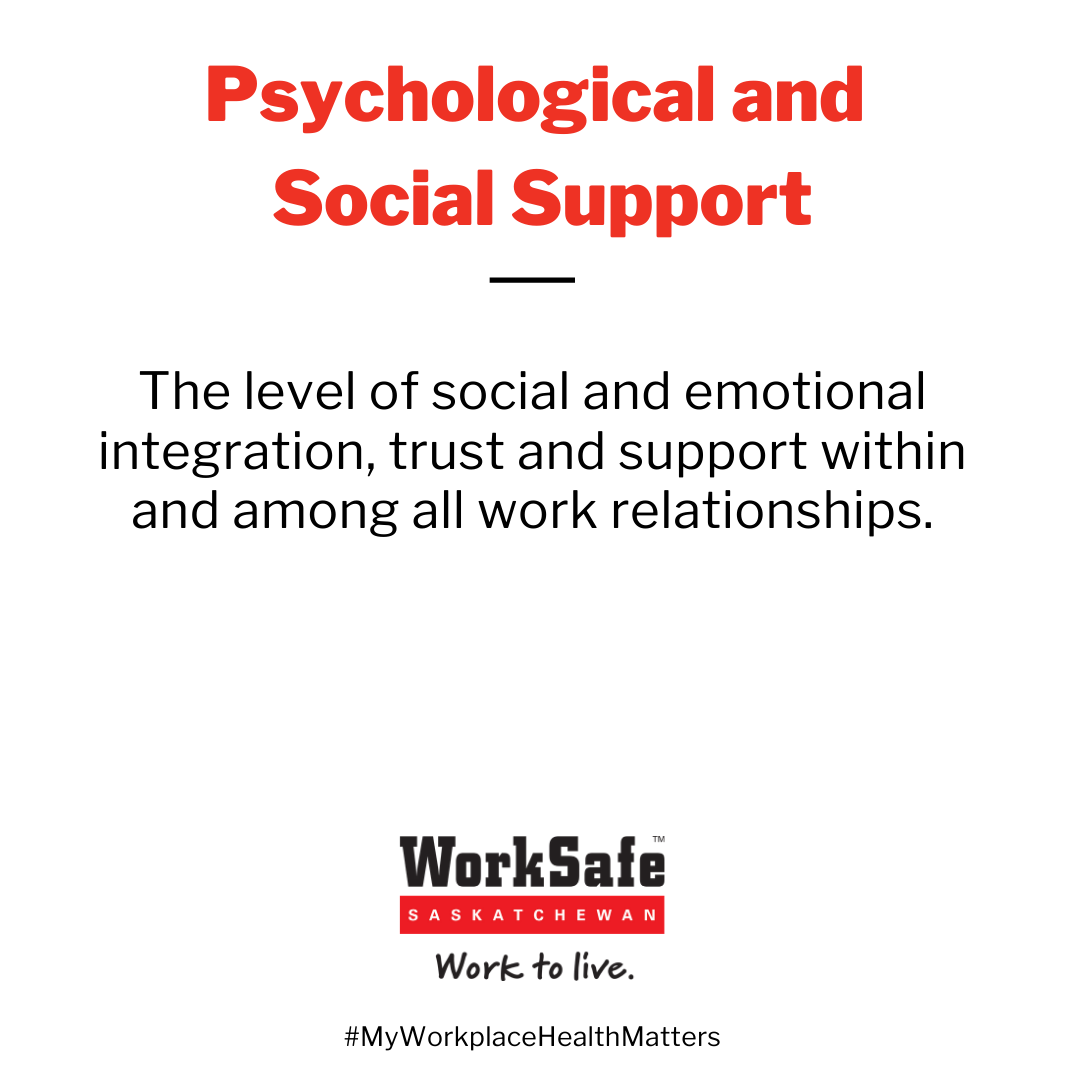 Psychological and social support
Psychological and social support
The level of social and emotional integration, trust and support within and among all work relationships.
“Our prime purpose in this life is to help others. And if you can’t help them, at least don’t hurt them.” – Dalai Lama
Overview
What is psychological and social support?
Psychological and social support comprises all supportive social interactions available at work; either with co-workers or supervisors. It refers to the degree of social and emotional integration and trust among co-workers and supervisors. It refers also to the level of help and assistance provided by others when one is performing tasks. Equally important are the workers’ perceptions and awareness of organizational support. When workers perceive organizational support, it means they believe their organization values their contributions, is committed to ensuring their psychological well-being and provides meaningful support if this well-being is compromised.
An organization with good psychological and social support would be able to state that:
- The organization offers services or benefits that address worker psychological and mental health.
- Workers feel part of a community and that the people they are working with are helpful in fulfilling the job requirements.
- The organization has a process in place to intervene if an employee looks distressed while at work.
- Workers feel supported by the organization when they are dealing with personal or family issues.
- The organization supports workers who are returning to work after time off due to a mental health condition.
- People in the organization have a good understanding of the importance of worker mental health.
FAQs
Action
Next steps: Committing to a psychologically and socially supportive workplace
Psychological and social support is psychosocial factor 2 from CAN/CSA-Z1003-13/BNQ 9700-803/2013 – Psychological Health and Safety in the Workplace. Retrieved from: https://www.csagroup.org/article/cancsa-z1003-13-bnq-9700-803-2013-r2018/. See also Guarding Minds at Work (Samra et al.): Retrieved from https://www.guardingmindsatwork.ca/resources.




